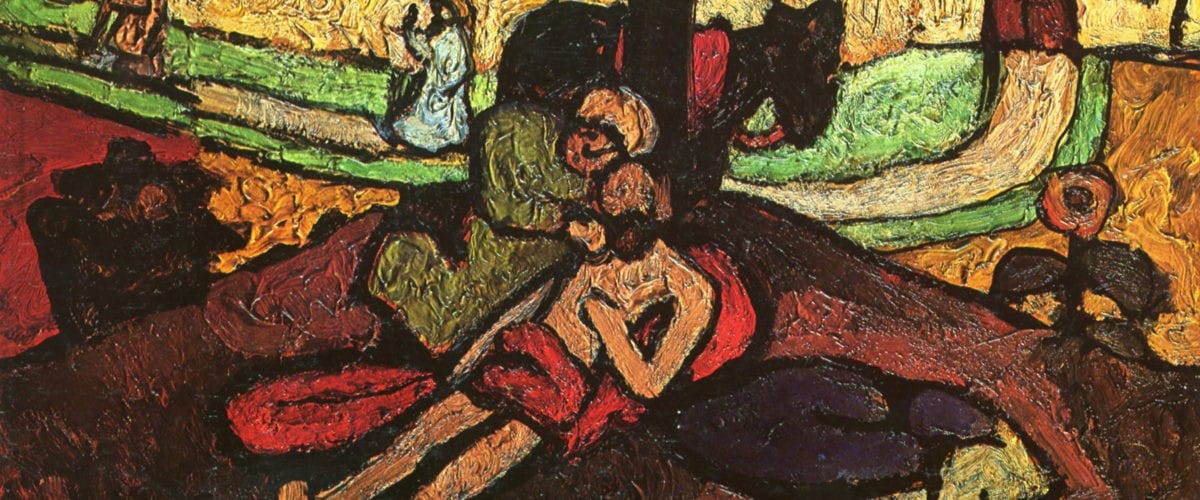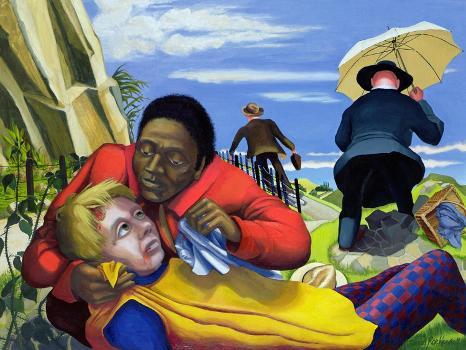
What does it take to love our neighbor?
by Daniel O’Neill, MD, MTh
The world longs for sustainable, abundant life. It’s written into the Sustainable Development Goals as health for all (#3) and collaboration to leave no one behind (#17).
In Luke 10:25-37, an expert in the Law of Moses once asked Jesus, “Rabbi, what must I do to inherit eternal life?” His answer is a profound guide to loving our neighbor.
He started by answering, “What is written in the Law?” It starts with loving God with our whole person, and also loving others as whole persons. But we must seek and answer the pregnant question the expert in the law asked in response to Jesus’ Great Commandment: “And who is my neighbor?” (Luke 10:29)
He wanted to justify himself and avoid his responsibility to his neighbor, but Jesus gave him opportunity to seek God’s deeper justice through a parable about a mixed-race Samaritan crossing cultures, taking risks of contamination, and expending himself to care for a vulnerable, wounded person. That’s what loving your neighbor looks like.
At Health for All Nations we see our neighbors as those vulnerable people and populations from all nations (ethnos) who are longing for love, wholeness, and justice. We seek to steward global health and theological knowledge in order to “speak the truth in love,”(Eph 4:15) and speak truth to power with greater levels of understanding, innovation, and wisdom.
We long to see the global church fulfil her clear calling to become an integrated healing community, and for healthcare and global health workers to be inspired toward sustainable, integral mission. Jesus said, “How do you read it?”
The Good Samaritan

There are many challenges before us which inhibit this vision from being realized. Local churches which emphasize right relationship with God, but neglect right relationships with neighbors (and the planet) cannot be said to follow the Great Commandment. We cannot be like the priest and Levite who had all the religious training yet passed by on the other side of the road.
We must realize the corporeality of salvation. That salvation is more than just forensic justification, but all creation healed. Paul Tillich noted that, “if salvation is understood in the sense of healing, there is no conflict between the religious and medical, but the most intimate connection,” leading to an intensive collaboration of helpers. Jesus said, “do this and you will live.”
When the Samaritan took the wounded man to the Inn, he put it on his tab and empowered the innkeeper. Mobilizing resources from high-income countries and congregations to assist low-income countries and congregations can be a similar volitional act of love. But he also utilized the man’s own local resources, his own donkey, so as not to create unhealthy dependency. And he cared for him only until he was back on his feet – sustained by the grace of God. This is localization of aid, empowerment, collaboration, and multiplication. Jesus said, “go and do likewise.”

Loving our neighbor means being a neighbor. This requires sharing stories as well as data on outcomes of innovative ways to love our neighbors by being neighbors and dwelling among them. It means giving space for research and sharing cross-cultural reflection in order to know our global neighbors better, both their assets and their needs, and to best solutions which express love in tangible and defined ways.
The Christian Journal for Global Health is such a space where research and reflection are shared in the context of global health motivated by love for God and neighbor.
Health for All Nations and The Christian Journal for Global Health are Gold Sponsors of the CCIH 2022 Conference.
